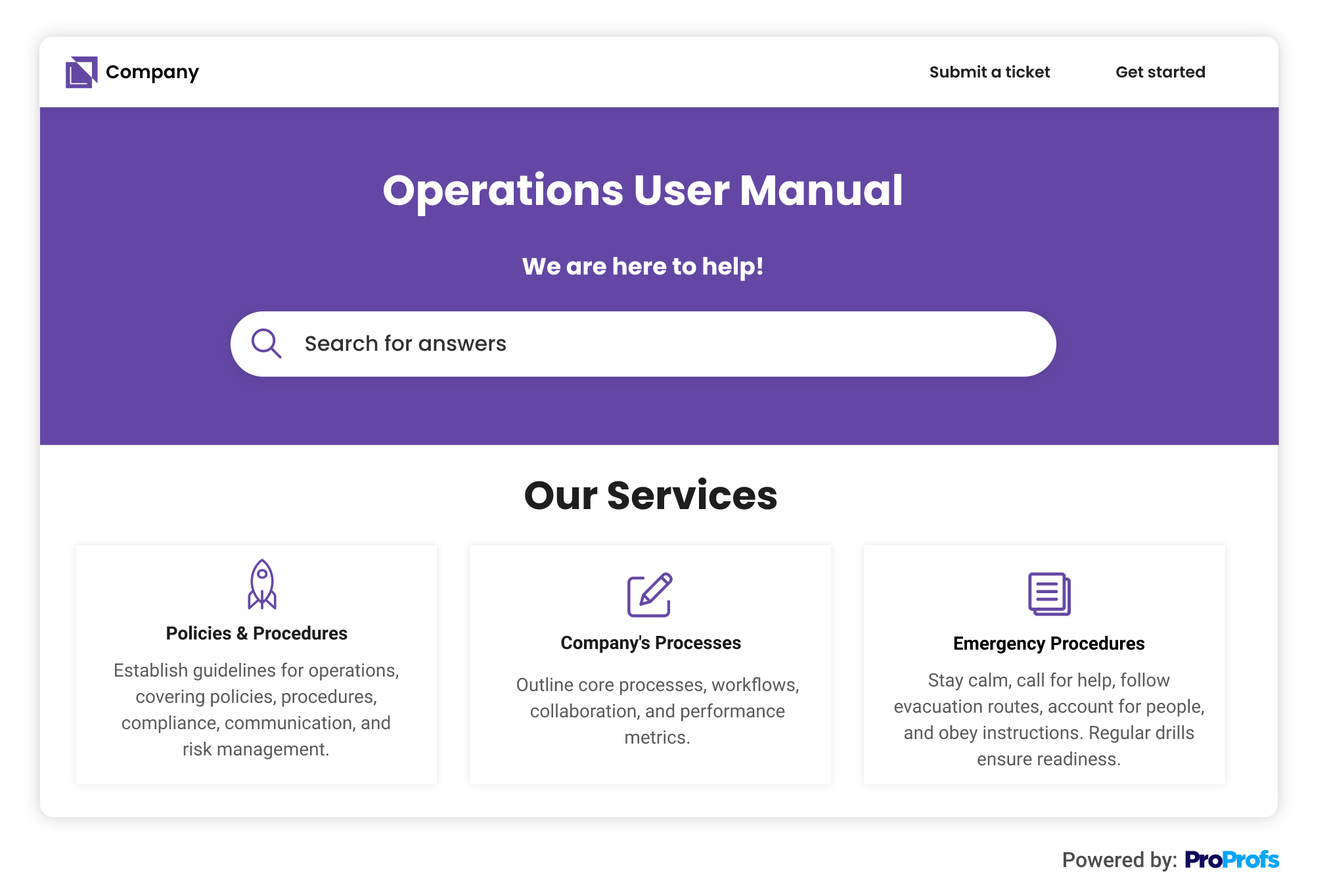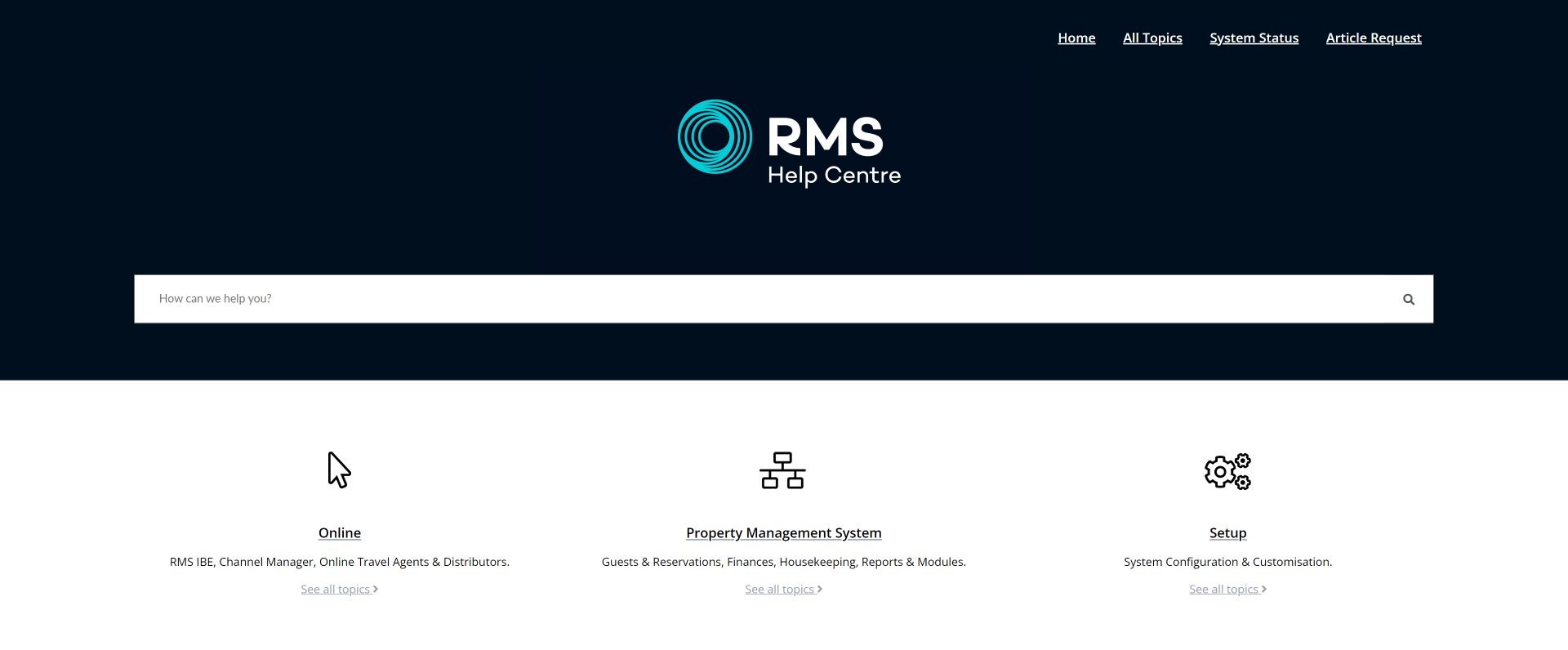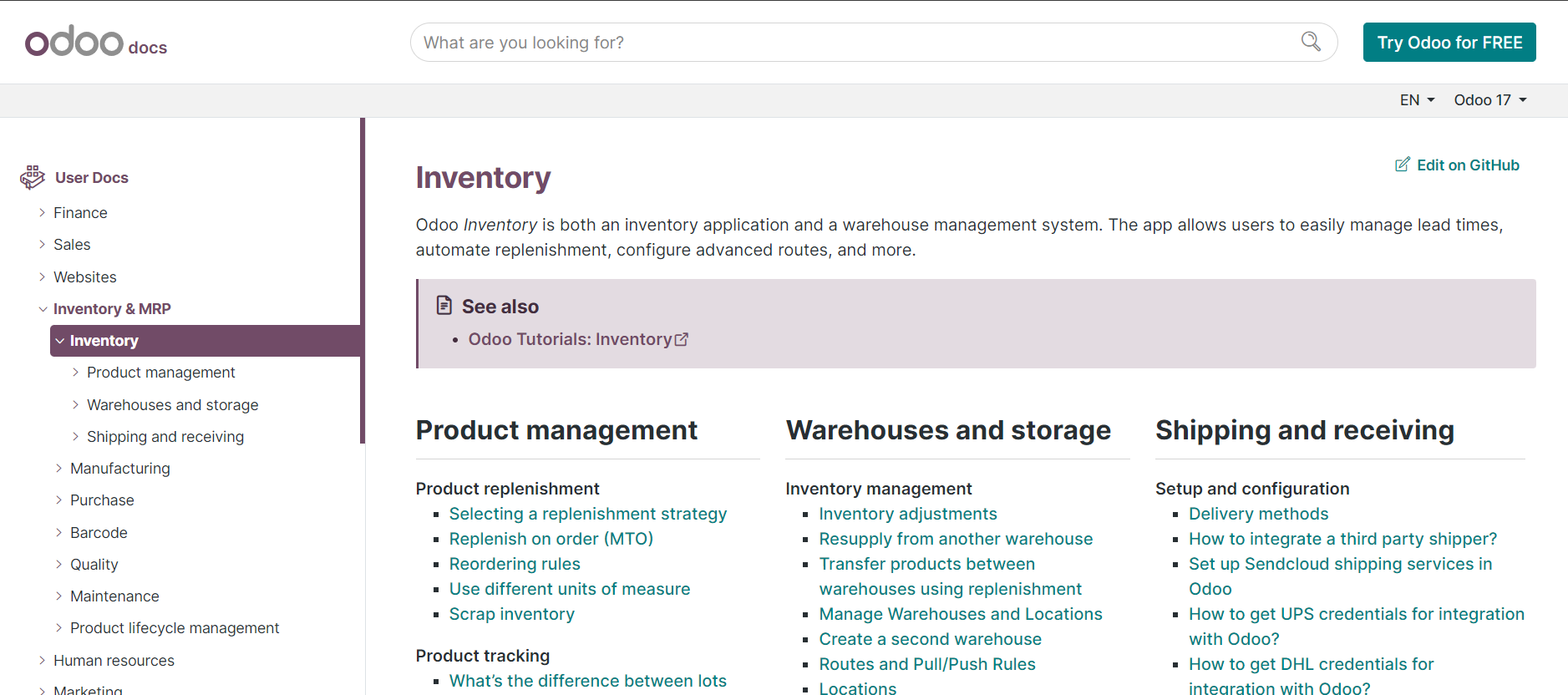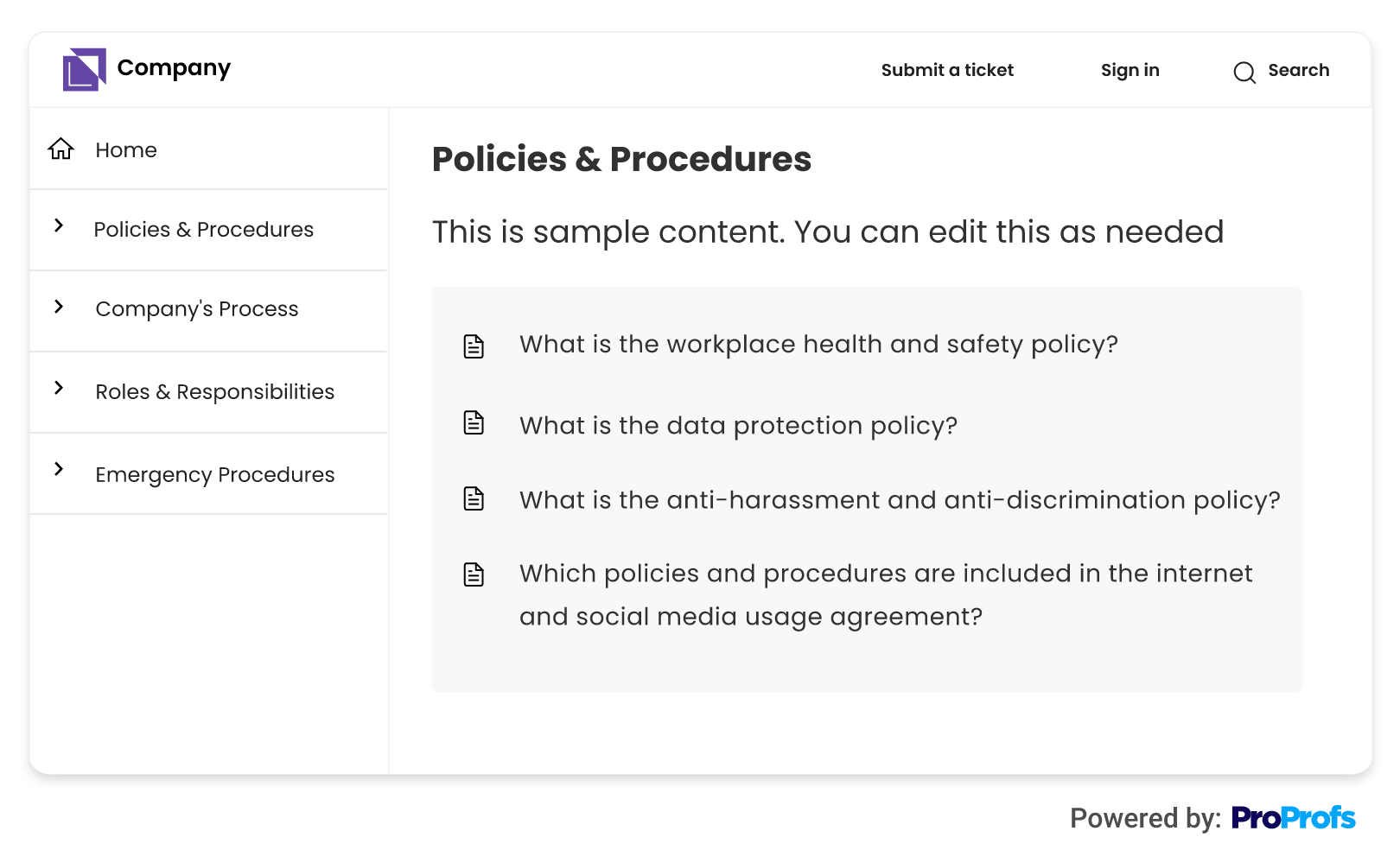
Brayn Wills is an experienced writer passionate about customer service and relationship building. His expertise encompasses help desk management, customer communication, AI chatbots, knowledge management, lead generation, and more.
Learn about Our Editorial Process Expert Writer Updated: 20 May, 2024
Imagine sailing a ship without a compass – lost, uncertain, and bound for rocky waters. Navigating a business without an operations manual can feel just like that.
Miscommunication, inconsistent processes, and operational chaos often become chores without an operations manual.
An operations manual is a detailed guidebook that provides employees with clear instructions on performing their tasks, handling various situations, and adhering to company policies.
“Operations Manual means a manual containing procedures, instructions, and guidance for use by operational personnel in the execution of their duties.”
– Law Insider
In this blog, we will discuss the basics of the operations manual, the challenges in their creation, and operations manual examples and templates.

An operations manual is an extensive document that outlines a business’s standard operating procedures and processes. It guides employees in day-to-day operations and brings consistency and efficiency to the organization’s processes.
The operations manual outlines instructions on operational, administrative, and technical procedures. It details workflow processes, customer service protocols, safety guidelines, quality control procedures, and more.
Let’s look at the benefits of a business operations manual and explore some specific examples.
An operations manual enables consistency in the delivery of products or services.
For example, a restaurant may have a section in its operations manual that outlines the steps for preparing a particular dish, including the specific ingredients, cooking techniques, plating instructions, and portion sizes. This is to help every chef follow the same procedure, resulting in consistent quality for each customer.
The operations manual guides employees with step-by-step instructions to perform tasks efficiently.
For example, a manufacturing company could have a section outlining the assembly process for a specific product, with details on the order of operations, required tools, and quality control checks. This is to reduce errors, minimize rework, and maximize productivity.
New employees can utilize the operations manual to understand different tasks.
For example, a customer service professional in a call center can refer to the manual to learn about the company’s communication guidelines, handle customer complaints, and resolve common issues. This helps boost the onboarding process and ensures consistent service quality.
An operations manual plays an essential role in minimizing risks and ensuring the safety of employees and customers.
For example, a construction company could have detailed safety procedures in its manual, including guidelines for working at heights, handling hazardous materials, and operating heavy machinery. Adhering to these procedures reduces the likelihood of accidents, injuries, and legal liabilities.
In the case of employee turnover or absence, the operations manual is a reference for temporary or new professionals.
For example, a retail store can include a section in the manual detailing the opening and closing procedures, cash handling policies, and inventory management protocols. This enables smooth operations even with a different team in place.
The operations manual can be updated accordingly as businesses grow and expand.
For example, a franchise restaurant’s operations manual could include standard recipes and cooking procedures and guidelines for restaurant layout, equipment maintenance, and staff scheduling.
This helps the business to replicate its success across multiple locations with consistent operations.
Crafting an operations manual can be time-consuming and challenging for businesses doing it the traditional way without using software meant for the job. Here are some common challenges businesses face when crafting an operations manual:
Pro Tip: Operations manual software can help create a comprehensive operations manual in less time, using templates, pre-built content, and collaboration tools that enable multiple users across departments to access and contribute to the manual.
Pro Tip: Operations manual software can address this challenge using a centralized repository of standardized terms and definitions. It enables a consistent structure and format that guides users through the manual and helps departments update their respective sections using the same language and templates.
Pro Tip: Operations manual software can simplify this process by enabling version control and easy-to-use AI-enabled editing tools, allowing real-time collaboration between different departments, tracking updates, and modifying documents more efficiently.
Pro Tip: Operations manual software ensures compliance with the same procedures, protocols, and safety measures across the organization. It accesses relevant policies, regulations, and procedures across departments through a centralized repository.
It also offers tools to track employee compliance, monitor processes, and identify areas of non-compliance.
Pro Tip: Operations manual software allows users to create user-friendly operations manuals by offering customizable branding options, interactive elements, user-friendly templates, multimedia assets, and visual examples.
It simplifies complex procedures and terminology while allowing for easily searchable content. It also provides comprehensive analytics to track usage, identify gaps or areas of low engagement, and gather feedback on the manual’s effectiveness.
Let’s explore some examples of operations manuals commonly used across various industries.

Includes strategies for answering customers’ calls, handling complaints, and managing call center staff. It can also include guidelines for answering calls, handling customer complaints, managing call center staff, and maintaining service quality. It’s vital for ensuring excellent customer service and efficient operations.
Describes protocols for patient care, billing, insurance, and compliance with industry regulations.
It helps medical professionals ensure the medical practice operates smoothly and adheres to legal requirements.

Contains procedures to produce products consistently and efficiently, including assembly line operations and quality assurance measures.
It covers assembly line operations, quality assurance measures, equipment maintenance protocols, and safety guidelines. It’s essential for maintaining product quality and operational efficiency.
Outlines the procedures and policies for housekeeping, front desk, accounting, and other hotel departments.
It helps all departments collaborate seamlessly to provide excellent guest service.
It describes the procedures for booking transport services, sending customer notifications, troubleshooting issues, and maintaining vehicle safety standards.
It helps ensure reliable and efficient transportation services.

Outlines software development, maintenance, and support services procedures. It can include coding standards, project management guidelines, testing protocols, and customer support procedures. It’s vital for delivering high-quality software products and services.
Provides guidelines for sales processes, inventory management, customer service, and employee training.
It enables smooth retail operations and excellent customer service.

Operations manual template allows you to get started quickly. It comes with a pre-defined table of contents and placeholder content that you can replace as you create your operations manual. It’s a great way to quickly standardize business processes, train new hires, reduce liability, save time, scale the business, and improve work quality.
They provide a framework for efficient and consistent operations. ProProfs Knowledge Base comes equipped with meticulously designed templates to design and write error-free operations manuals.
You can create one from scratch with personalized customization or browse and use the already available ones.
An operations manual contains detailed information about a business’s procedures, policies, guidelines, and workflow.
It also covers staff roles, responsibilities, safety measures, quality control metrics, and customer service standards.
An operations manual template is a pre-designed document that outlines its basic structure and content.
It usually includes sample text, placeholders for specific information, and formatting guidelines to simplify creating an operations manual for a particular business.
A business operations manual is an extensive document that provides a complete overview of a company’s operations.
It covers marketing and sales strategies, financial management practices, human resources policies, IT systems, and infrastructure.
The length of an operations manual depends upon the scope and complexity of the business processes it covers.
It may range from a few dozen pages to several hundred pages, depending on the level of detail included.
However, an ideal operations manual needs to be concise and easy to understand for it to be helpful to employees and stakeholders.
FREE. All Features. FOREVER!
Try our Forever FREE account with all premium features!